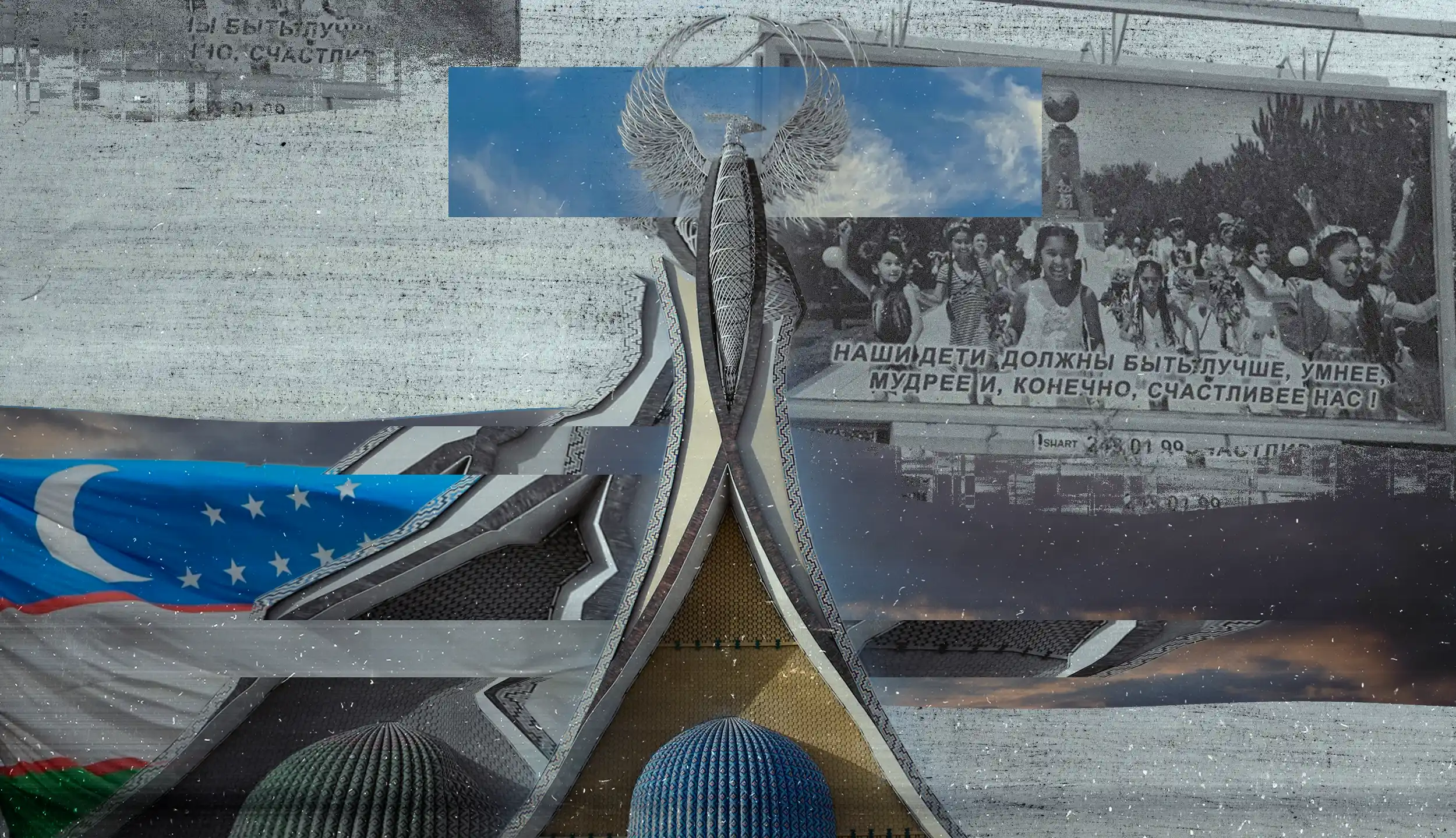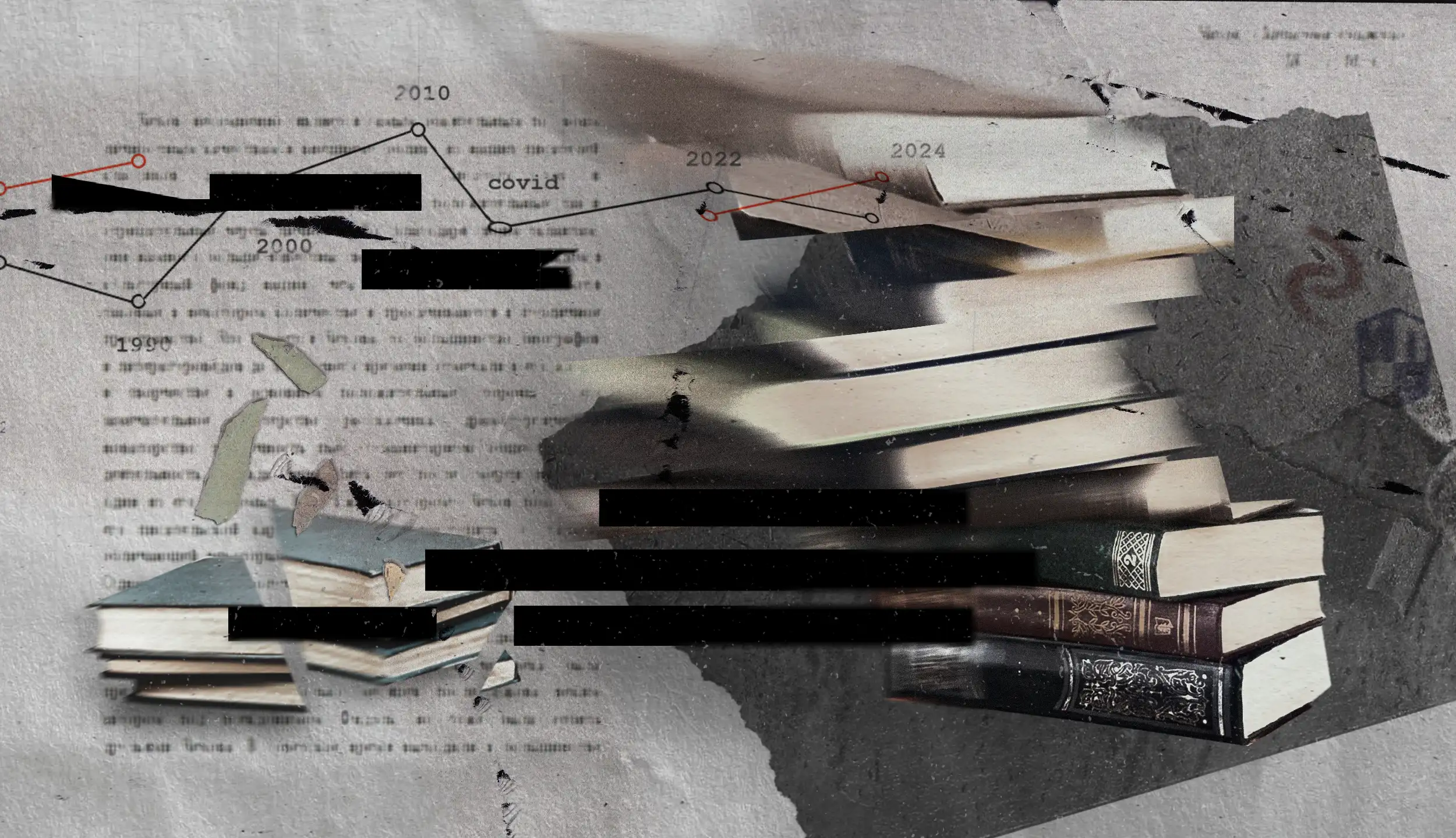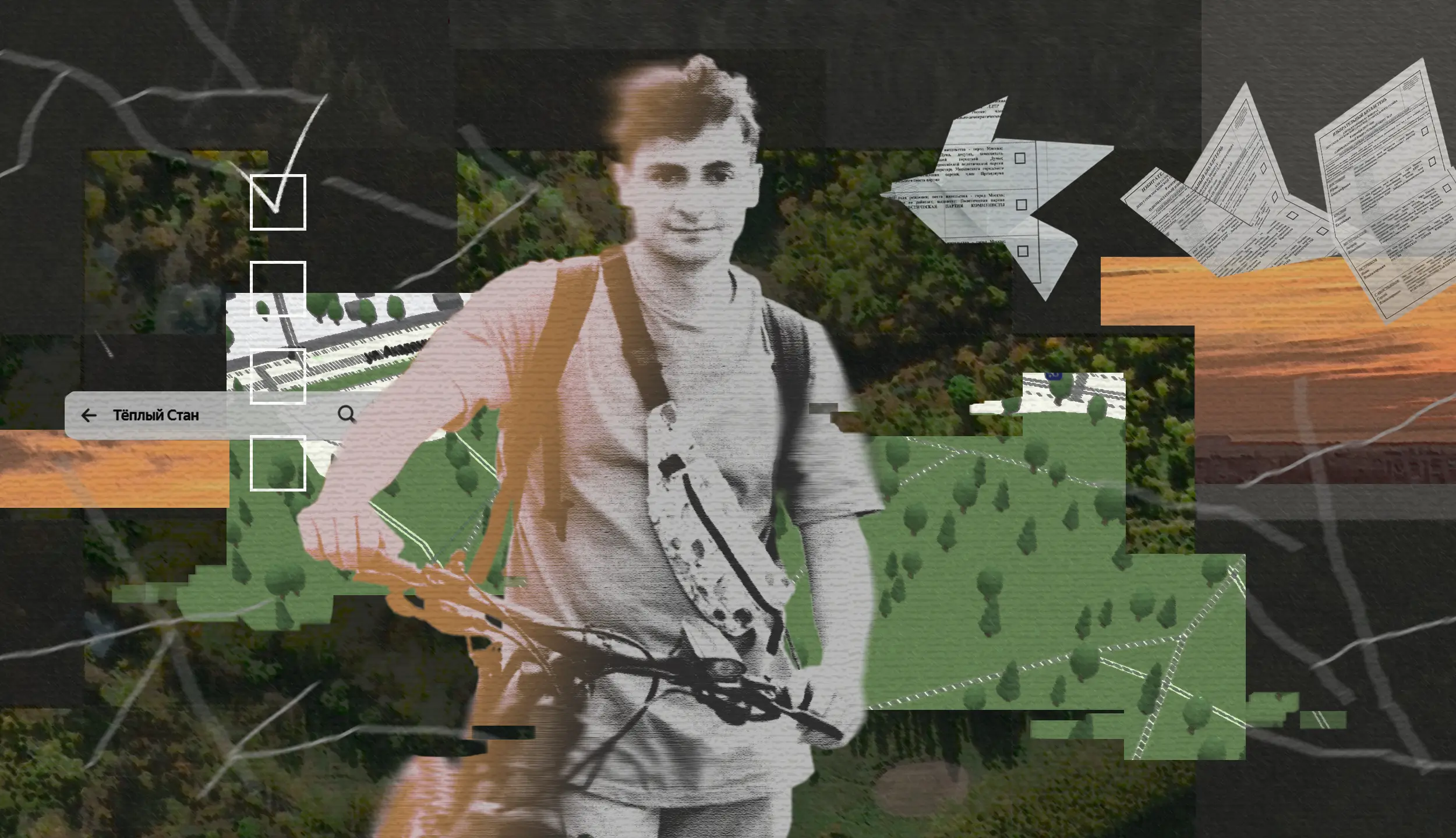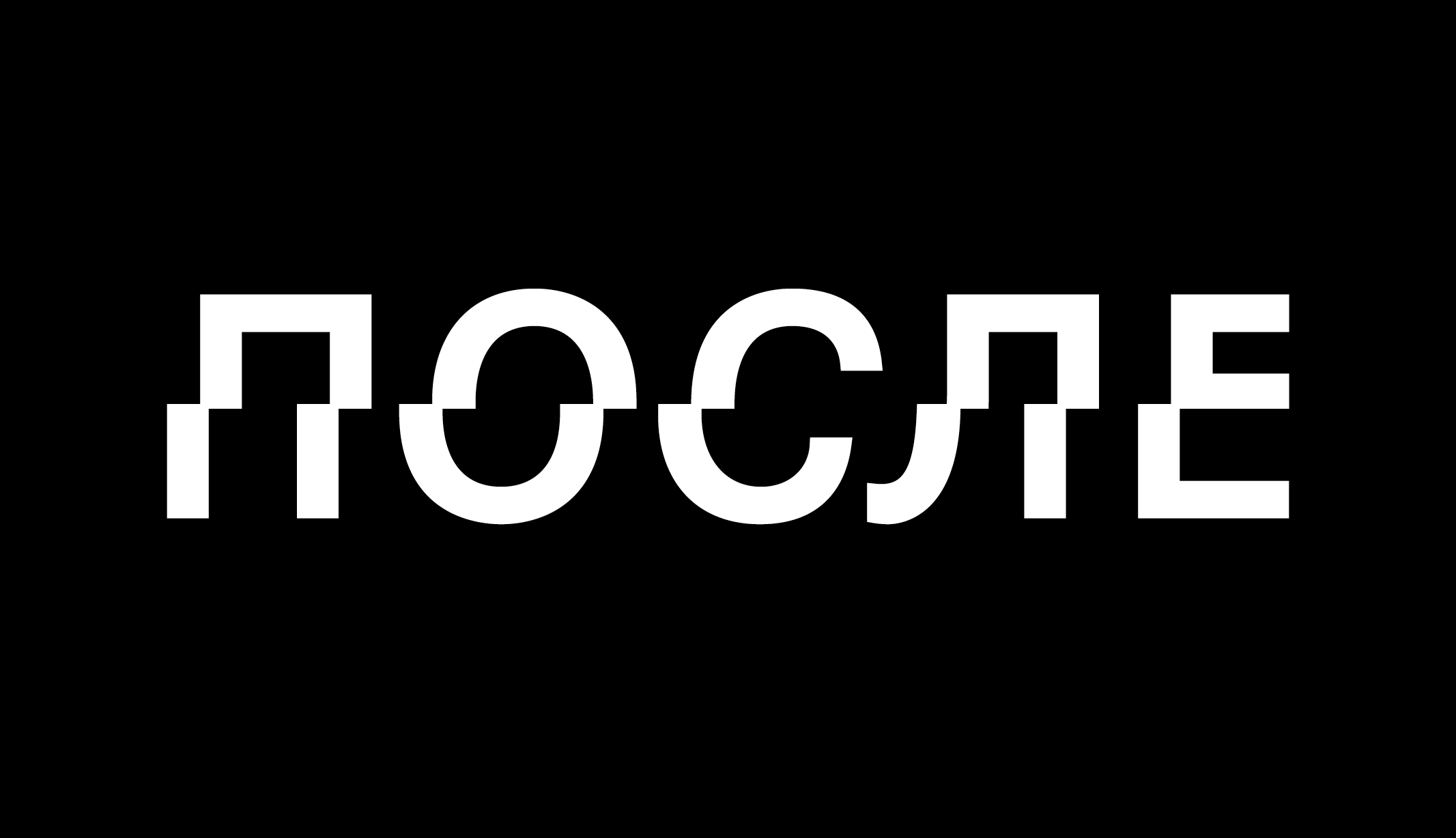In March 2022, Uzbek Foreign Minister Abdulaziz Kamilov declared that “Uzbekistan recognizes the independence, sovereignty and territorial integrity of Ukraine. We have not recognized the Luhansk and Donetsk People’s Republics,”. A month later he was removed from his post.
All throughout the next year, Uzbek officials maintained a “neutral” position on the Russian invasion of Ukraine. On the one hand, the war was unleashed by Uzbekistan’s main economic partner. On the other hand, the war was condemned by the international community. Uzbekistan has been trying to rehabilitate itself in front of the latter since 2016, after almost three years of dictatorship.
What Uzbekistan says about the war – or, rather, what it does not say about the war – reveals a lot about the current state of this country, after reforms were initiated several years ago. Official Tashkent is caught between two fires, but nothing is blazing inside the country proper: there is still self-censorship in the media, more attention is being paid to local problems of the developing country that is Uzbekistan, and there remains a tacit oversight of infospace by people and institutions close to the president. Cultural institutions in Uzbekistan are under pressure from the supposed “curators” (who are in reality representatives of the security services). Local civil society is in a state of clinical death. And the majority of the country’s 36 million people watch the TV channel “Russia,” which has an almost nationwide outreach. How do the media and cultural institutions in Uzbekistan talk about the war – and do they, in fact, talk about it?
The power of the secret services and the total vacuum: the way things were in the past
Since 1991, Uzbekistan was under the rule of Islam Karimov for two and a half decades. The man who deservedly made it into the ratings of the world’s worst dictators was elected again and again, by holding constitutional referenda that extended his term, and, like many other dictators, he only left office upon his death.
Having started pressuring the opposition at the beginning of his first term, by the middle of his rule Karimov had “closed” Uzbekistan both to the international community and to any influence from civil society from within. The media and NGOs became particularly restricted after the 2005 Andijan massacre, when troops from the Uzbek National Security Service fired into a crowd of protesters. The Uzbek authorities still refer to the Andijan protesters as “radical extremists,” while human rights organizations refer to them as a gathering of civilians dissatisfied with the situation in their country. In reality, the shots were fired at those people who gathered on the public square. According to various sources, between several hundred and several thousand civilians were killed.
After the events of 2005, Karimov literally broke off relations with the outside world, especially with Western countries, which were calling for a fair investigation and pointed out human rights violations in the country. Along with foreign companies and diplomats, local NGOs and most media outlets potentially critical of the government also fell out of favor with the Uzbek regime.
By 2015, most NGOs in the country were GONGOs (Government-organized non-governmental organizations), and access to foreign and independent Central Asian media was blocked. There was only one international journalist reporting on economics for Reuters in the entire country. A complete vacuum filled the media space. The print media outlets, which had been state-owned since the Soviet times, were no longer read by anyone: they continued existing at the expense of subscriptions that were forcibly imposed on teachers, doctors, and employees of state organizations. And the online media reprinted the official press releases of government agencies.
The television presented nothing but variations on the state channel Akhborot, which was a successor of Soviet TV, with anchormen and anchorwomen who were monotonously reading the “news” of a prepared script. Social networks and Internet searches were inaccessible to most citizens – and more or less accessible and inexpensive Internet appeared in the regions of the country only a few years ago.
Journalists who worked at that time tell about state censorship in the media, when publications had to show materials to a special “person” from the government agency before the material was published. And everyone certainly knew that there was an unspoken, unwritten ban on any criticism of the government. At that time, this prohibition did not even include criticism of the highest echelons of state power, but even simple dissatisfaction with the work of public utilities and food prices was anathema. Propaganda posters on the streets read: “Great and Holy is the Independent Motherland.”
This went on for 25 years until Karimov suddenly died in September 2016, just before the biggest national holiday, the Independence Day. The topic of the Stockholm syndrome, then observed by the genuinely grieving country, has not been sufficiently investigated so far.
“I’ve been advised to shut down the media outlet”: on the freedom of speech in “New Uzbekistan”
Karimov was succeeded by Shavkat Mirziyoyev, who had served as prime minister for 13 years and was the president’s right-hand man. Everyone predicted that he would be a full-fledged successor to the Karimov regime, but the unexpected happened.
From the very beginning of his presidency, Mirziyoyev set out to “open up” Uzbekistan: the country made friends with its neighbors in the region again, the borders with Tajikistan and Kyrgyzstan were opened, relations with Western countries were renewed, the black market disappeared, and businesses began to breathe more freely. The presidential apparatus set a goal of getting to the top of all kinds of world rankings, moving away from the image of an authoritarian country, and began to move systematically towards this goal, sometimes through real reforms, and, in other instances – through nominal changes and declarative statements.
Officially, the course was set for the “New Uzbekistan” and the “Third Renaissance” – these two concepts had been constructed by Uzbek political technologists towards the end of the first presidential term. The “New Uzbekistan” was to be fundamentally different from the old one: now freedom of the individual was to triumph in the country, and the concern for human beings was to take front stage.
The first reforms took place in the sphere of the media. The authorities “allowed” journalists to start writing about social problems. For the first couple of years, bloggers became the new activists – people turned to them for help, and problems were solved in the wake of their posts. In 2019, “Fergana” and several other sites that had long been blocked were relaunched. The country’s ranking by Reporters Without Borders was steadily rising upward, although even in the best years Uzbekistan remained in the group of countries with a difficult situation in the sphere of the freedom of speech.
But the twenty five years of dictatorship and authoritarianism could not pass without a trace, and, soon enough, gaps began to appear in the new reformist course.
The Agency for Information and Mass Communications and the Public Fund for the Support and Development of the National Mass Media were created to “protect the interests of journalists.” Mirziyoyev appointed his closest people to ensure the protection of press freedom in Uzbekistan. His former press secretary Komil Allamzhonov and his eldest daughter Saida Mirziyoyeva assumed these roles. Mirziyoyeva, like her predecessor Gulnara Karimova, quickly became the “second face” of reform, representing the country at various international fora and meeting with representatives of international organizations. Together with her mother and president’s spouse, Ziroat Mirziyoyeva, she headed the Zaamin Foundation, which receives large funds from the state budget and is dedicated to “charity and enhancing Uzbekistan’s potential in the international arena.”
These are not the only organizations that continue to control the journalistic work in the new Uzbekistan. The Uzbek Agency for Press and Information (UzAPI) and the National Association of Electronic Media (NAEMI) issue registrations to media outlets, and not all media are able to obtain these, and not at first attempt. For example, one satirical media outlet confidentially reported that it received registration only on the fourth attempt. The situation is similar with the issuance of registrations to NGOs: applications of some of them are turned down up to twenty times, allegedly because of the mistakes committed in filling them out. The law does not allow NGOs to start work without the registration.
The early years of reforms were characterized by widespread praise for the head of state. “Thanks to our esteemed president” is a common phrase in the comments on the news by any major media outlet, literally showing to whom the country owes this improvement in living standards. By 2020, when Mirziyoyev’s first term as president was coming to an end and gaps in reforms began to come to the surface, this excitement began to fade. The “tightening of the screws,” as some journalists in the country call it, began.
New repressive laws to control the media went into effect. Anyone posting anything on social media has become liable as a blogger. Media outlets and bloggers, in their turn, became liable for users’ comments on their content. Criminal liability for insulting the President has emerged, and not only the incumbent, but also the former president. Over the past two years, vague wording on punishment for “the disrespect of the state and of society” has appeared in the legislation. Moreover, a Journalist Code of Ethics is being prepared for adoption this year that is similar to the one that was introduced in Russia and which bans propaganda of “non-traditional relationships” and contains “vague formulations that can turn any citizen into a criminal,” as they have been called by experts from Uzbekistan.
“I’ve been advised to shut down the independent media, but I will not do it,” declared the president, in an interview in February of this year. He added: “Let them criticize, but let them criticize for a reason.” However, all journalists in the country know that there is an implicit ban on any criticism of the supreme power in the country – that is, of ministers, of the prime minister, and, of course, of the president and of his family, whose members and cronies hold several important positions in the government. At the same time, journalists and bloggers have been and continue to be quite vocal in their criticism of corruption on an “average” level, of the work of the public utility workers, of the budgetary purchases, of the culture, and of the education. This is what constitutes a safe space for criticism.
But journalists still say that the circle of the issues open to criticism is limited to those on which the president has already stated his position, and any desire to write anything about the president’s political course, his family and those close to him causes self-censorship and fear of reprisals.
Thus, Darina Solod, a media critic and editor of the independent media outlet, Hook.report, also points out that there are still few independent media outlets left in the country that are founded by journalists and “have a little international expertise and knowledge”. Virtually all existing media is either owned by businessmen or people who are close to state power. Censorship is not required here either: the policy of an editorial board unwilling to spoil relations with the authorities, advertisers and big business forces these outlets to consider the interests of the owner and the official political course.
Morever, the state’s security services still monitor media outlets and cultural institutions. The so-called “curators” from the State Security Service are assigned, for example, to the independent gallery 139 Documentary Center, which holds exhibitions on sensitive topics such as the history of forced labor in the cotton fields and the rehabilitation of political prisoners.
This is the state of affairs that the Uzbek infospace met February 24, 2022.
Russian propaganda in Uzbekistan and the dependence from the metropole
For many states, the war in Ukraine was the starting point for rethinking their economic, cultural, and, of course, colonial relations with Russia.
For Uzbekistan, such rethinking could be especially significant. The country is a post-Soviet republic that is landlocked. It allocated all of its fields to cotton production during the Soviet times. Its population continues to watch Russian TV channels, and sends millions of migrant workers to Russia, as well as a quarter of its exports. Remittances from Uzbeks working abroad account for a tenth of the country’s GDP, and laws similar to Russian legislation on “foreign agents” and on the “propaganda of non-traditional values” are regularly brought up for discussion and, as a rule, adopted by the authorities.
After the outbreak of the Russian-Ukrainian war, the Uzbek authorities faced a difficult choice. On the one hand, being totally dependent on the aggressor country made it necessary to maintain good relations with it. On the other hand, the strategy of the “New Uzbekistan” led by Shavkat Mirziyoyev implies a policy of openness, integration into the international community, respect for human rights and friendly relations with Western countries that condemned the war.
In such a situation, the country’s leadership decided to remain ostensibly neutral. Uzbekistan abstained from voting on all seven UN resolutions issued since the beginning of the war condemning Russia’s actions. The country also abstained from appointing a new special rapporteur on human rights in Russia and from allowing Vladimir Zelensky to make a video address at the 77th session of the UN.
An Uzbek linguist Alexei Ulko believes that this desire on the part of the country’s leadership to maintain good relations with Russia is one of the reasons for the success of Russian propaganda in Uzbekistan.
Russian TV channels such as Russia-1, NTV, Russia-24, as well as others, are part of the starting package of cable TV channels available to the majority of the Uzbek public. Stable, fast and cheap Internet is still not available in some parts of the country, and, therefore, cable TV is the most common source of information in Uzbekistan. According to a study by Internews, nearly one in ten respondents who watch TV said they prefer to watch news from Russian TV channels. “First Channel” is the favorite, it is watched by more than 7% of all of the people in Uzbekistan, of those who watch foreign channels.
Another media outlet that is available in the country is Sputnik, which is a branch of the international media agency of the same name, whose editor-in-chief is Margarita Simonyan and which was blocked in many countries after the start of the full-scale Russian military invasion of Ukraine.
The situation of “neutrality” should imply a rejection of a single narrative, but, in Uzbekistan, Russian propaganda has dominated the information space, drowning out information from Ukraine. Not only did the authorities not limit the propaganda of the aggressor country in any way, but, according to Alexei Ulko, they also imposed an unspoken ban on covering the number of civilian casualties, the destruction of Ukrainian towns and villages, and the atrocities of the Russian army.
No ban on war coverage was publicly announced. Some journalists claim that there has never been a ban. While cultural workers report the continuing practice of control of cultural institutions by the special services: “curators” advise “thinking twice” before making an exhibition about the Ukrainian events.
But there is still hope.
Not a “special military operation”, but a “war”
Some major online media outlets in Uzbekistan, both the Uzbek- and the Russian-language ones, call this war a war, place the term “special operation” in quotation marks to denote its hypocrisy, and publish official statements from both the Kremlin and the Ukrainian presidential office. One of the major Uzbek newspapers, Gazeta.uz, published an interview with the Ukrainian ambassador to Uzbekistan, Nikolai Doroshenko, on the eve of the anniversary of the invasion. Another major news outlet, Kun.uz, which follows a similar editorial policy and which has almost 1.5 million subscribers on social networks, while not equal in influence, is quite comparable to the success of Russian television channels in Uzbekistan.
People commenting on social media posts and media materials used the word “war” 16 times more often than “special military operation” in 2022, calling things by their proper name.
The war in Ukraine was of the most concern to Uzbek readers at its very beginning; after the first few months, the public interest has begun to wane. This interest resumed after the start of the Russian mobilization, when Tashkent received the second wave of migrants from Russia. By November 2022, the number of comments under news stories on this topic had dropped significantly again. At the same time, about a third of commenters supported the war – their comments were also the most popular.
Bots also wrote under the news items about the war. At the end of 2022, 5% of comments on the war in the Uzbek media were written by the same user who has no friends and is subscribed only to a few news outlets. Journalist Dilfuza Mirzaakhmedova and researcher Dinara Gimadi came to this conclusion after analyzing 3,200 comments under Uzbek media publications.
Uzbek media wrote extensively about the impact of the war on the economy, the situation of migrant workers, the “relocation” of specialists from Russia to Tashkent and changes in the labor market in connection with this situation. However, the local media and cultural institutions say little about the colonial nature of the war, the aggressor’s imperialism and their own postcolonial relations with Russia. The only material that includes the words “imperial ambitions” came right after the invasion began, and the search engine query “decolonization in Uzbekistan” produces only one local minor media result.
Similarly, there is little support for Ukrainian citizens, as there is in many other countries through rallies and official statements. Only a few small independent media outlets, grassroots initiatives and bloggers have spoken out openly against the war. The closer the media are to the state, the fewer mentions of the war are found in them.
Whether this is neutrality or an unspoken ban on a certain angle of coverage is almost impossible to say: the state as a whole is not transparent, and many of the rules of the game are set behind the scenes and will never be pronounced out loud. The tacit bans, the shaky boundaries of permissible freedom of speech, which most media workers do not dare to feel, and continuing self-censorship in the country — all of this has resulted in the war in Ukraine not being strongly condemned by the local media, not reflecting on post-colonial relations, and not starting a decolonization of consciousness, for which this was a good chance.







